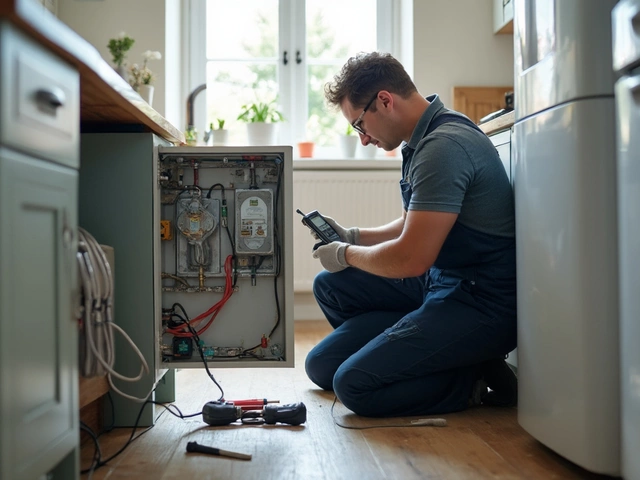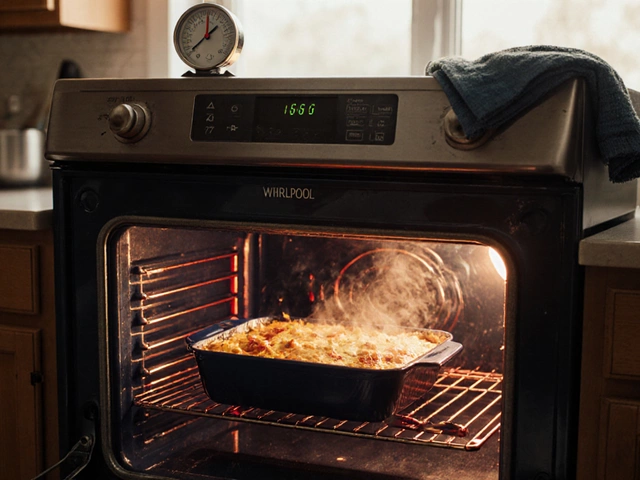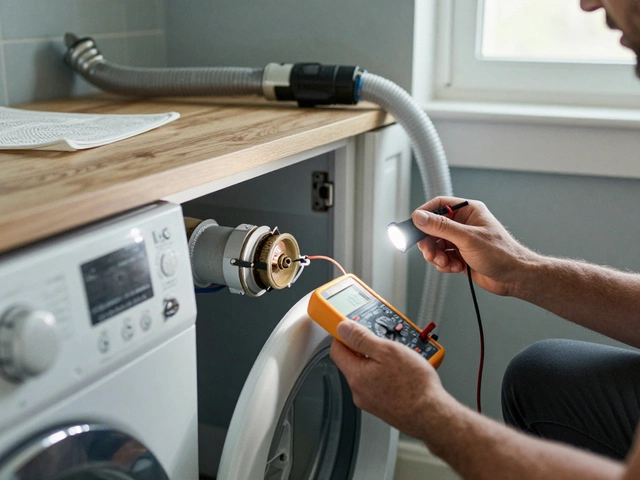Your freezer stops running. Suddenly, you’ve got a week’s worth of food at risk, an appliance that’s either buzzing, dripping, or just plain dead, and a pressing question: should you fix it or give it the boot? Most people have no idea what truly tips the scales. The truth is, knowing whether a freezer is worth repairing or tossing is a real money saver—sometimes, even a few hundred bucks. Freezers aren’t built to last forever, but the line between repair and replace isn’t as clear-cut as you might think. Stick around, because choosing wrong can mean wasted cash or endless rewiring headaches.
What’s the Real Cost: Repair or Replace?
It’s tempting to assume fixing is always cheaper, but it’s not that simple. The average freezer repair can run anywhere from $100 to $600, depending on the problem. Small issues like a faulty door seal or broken thermostat are quick fixes, often under $150. But when you get into compressor replacements or coolant leaks, those bills shoot up. Compressors—the workhorses of any freezer—can set you back as much as $400 just for the part, before labor. If your freezer is already over eight years old, this is usually a hard pill to swallow.
Now, on the other end, a new mid-range freezer costs $400 to $1,400. That includes energy-efficient models, better technology, and usually a more generous warranty than whatever you currently have icing up in the corner. But don’t forget delivery fees or the headache (and sometimes cost) of hauling away the old one. Suddenly, the replacement option isn’t always the easy win.
Think about the hidden time costs, too. Replacement means you’re shopping, scheduling, and waiting for delivery—and possibly tossing all that food you had stuffed in the freezer just days before. Some repairs, especially if you can DIY (door gaskets, maybe a light switch, cleaning out a blocked drain), can be done in an evening for under $50. If you think your repair is minor, get multiple quotes. Appliance repair pros will sometimes waive their service call fee if you move forward with them—that’s a potential $50 to $100 saved right there.
There’s even an old rule of thumb, straight from Consumer Reports: If the cost of repair is more than half the price of a new appliance—and the freezer is already beyond half its life expectancy—it’s often smarter to replace. Most freezers last between 10-16 years if you treat them right, but the cheaper models often bow out earlier. Track your receipts. You’ll be surprised how much money gets poured into keeping appliances on life support beyond their reasonable lifespan.

Hidden Factors That Affect the Decision
It’s rarely just about repair bills vs. the sticker price of a new freezer. One big factor: energy consumption. Old freezers are energy hogs. According to actual tests, a freezer from the 1990s can cost double or triple what a modern energy-efficient freezer consumes in power bills per year—sometimes $100 or more just in wasted electricity. If your electricity provider hiked prices (and they all seem to), adding up five years of savings might tip the decision in favor of a new model.
Warranties matter, too. Repairs on out-of-warranty appliances can feel like gambling. You pay, but if something else breaks six months later, you start the cycle again. New freezers offer at least one to two years of overall coverage, with many manufacturers providing longer coverage on the sealed system components like compressors or evaporator coils. If your repair doesn’t come with a significant warranty, your peace of mind might be worth the upgrade.
Another thing: parts availability. Freezer models change fast. If you have an obscure or discontinued model, parts could be tricky to find—sometimes special ordering from overseas. That not only increases the price, but adds time and hassle. Freezer brands with strong service networks (like Whirlpool or GE) are typically easier to repair, while lesser-known brands might leave you scrambling for parts.
Don’t forget the true value of what’s inside. If you’re freezing bulk steaks, breastmilk, or a year’s harvest of fresh berries, a sudden failure means losing hundreds in food. Some newer freezers have warning alarms, better insulation, or smart features that help prevent big losses if things go wrong. If reliability and food safety are high stakes for you, these features can be worth the splurge.
And last, let’s talk environmental impact. Hauling old freezers to the dump isn’t great for the planet, especially if they’re not properly recycled. Many municipalities—and appliance retailers!—offer recycling or “haul away” services. Sometimes you’ll even get a rebate for switching to an eco-friendly model. If sustainability matters to you, look into your options before making a choice.

Smart Tips for Saving Money on Freezer Repairs and Replacements
If you’re leaning toward repair, ask yourself a few questions: Is your freezer making weird sounds, leaking water, or simply not cooling? Unplug it first, then check for simple issues: is the thermostat turned up, are the coils dust-free, is the door sealing tight? Just cleaning dust off condenser coils or fixing a wonky seal with a $15 gasket can bring a “dead” freezer back to life, no tech needed.
For anything more complicated—ice buildup you can’t explain, compressor clicks, or strange burning smells—call a pro. Get written estimates, and compare what several repair shops offer. Make sure they guarantee their work; a legit repair service won’t hesitate to promise at least 60–90 days on labor and parts. Avoid “freezer whisperers” found on Craigslist unless they come with strong, real reviews.
If replacement is on your radar, look into energy rebates offered by your utility provider. Some cities even run seasonal “appliance recycling” drives where you get a gift card just for upgrading. Don’t overlook the store’s scratch-and-dent section; these models are new, but sell cheap because of a tiny cosmetic scratch you’ll never see once it’s in your mudroom.
- Keep your freezer at the sweet spot: -18°C (0°F). Any colder wastes energy.
- Don’t overstuff it or leave it nearly empty. Use bags of ice or old bread to help maintain temperature.
- Defrost manually twice a year if you don’t have an auto-defrost model. Excess ice makes your freezer work harder.
Before anything big, check with your home warranty or renters insurance—some policies cover breakdowns, once you pay a small deductible. And never let a repair tech start work unless you get the price in writing. If they can’t guarantee a fix, or the quoted repair is more than half the replacement cost, you’re almost always better off shopping for a new unit.
If you want a freezer that’ll last, stick with brands proven for parts availability and long-term reliability. Check for real reviews—not just the five stars, but what people hated. Sometimes, a $50–100 price bump for a brand with a strong track record is way cheaper than rolling the dice on a no-name. And don’t be shy about haggling—big box stores negotiate way more than you’d expect, especially toward the end of the month.
The decision to repair or replace your freezer isn’t one-size-fits-all, but armed with a clear sense of your appliance’s age, repair history, and the specifics of what’s broken, you’re in the driver’s seat. Weigh the numbers, not just the upfront cost but the running costs, food value, and long-term headaches. That’s how you turn a frozen dilemma into a smart, money-saving move.





